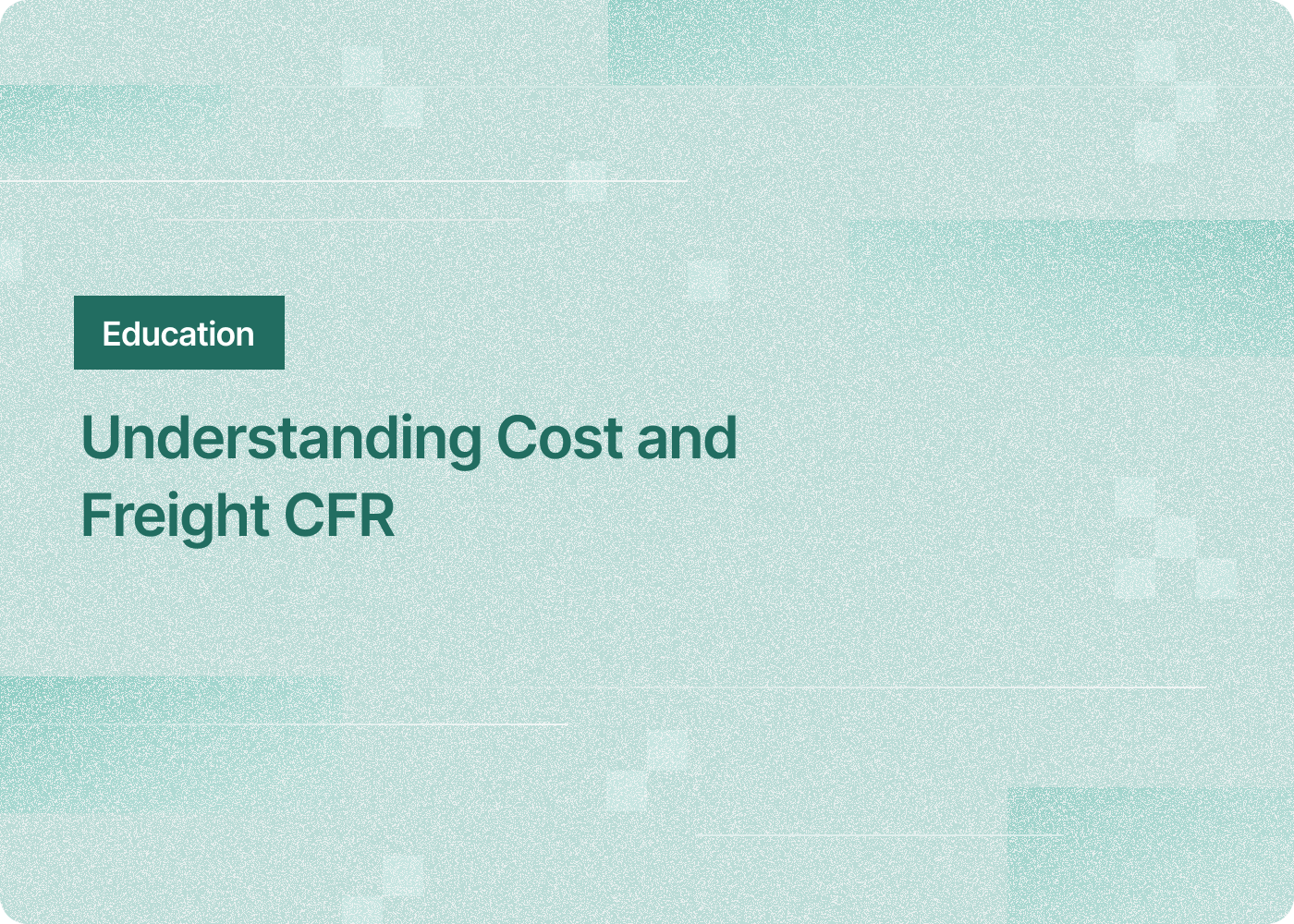In the intricate tapestry of international trade, the threads of CFR Incoterms weave their way prominently, guiding transactions with clarity and precision. As an essential lexicon of the international chamber, these terms resonate with the melody of global commerce. But why are they pivotal?
Understanding the dance of cost and freight (CFR) terms empowers businesses to operate with confidence, as they navigate the often-turbulent seas of global trade. When the seller arranges transportation, or the point at which risk transfers from one party to another, these terminologies become invaluable signposts. By demystifying the concepts, businesses gain direct access to informed decision-making, ensuring that trade flows seamlessly from the origin port to the final destination.
Each term, each nuance, plays its part, and mastering them not only refines the shipping process but also strengthens the very foundation upon which international trade rests. Dive deep with us as we chart the course through the waters of CFR Incoterms.
What is Cost and Freight (CFR) Incoterm?
In the world of international trade, a plethora of terms float around, but few resonate as deeply as Cost and Freight (CFR) Incoterm. This term acts as a beacon, guiding businesses through the intricacies of global commerce. But what does it truly signify?
Cost and Freight (often abbreviated as CFR) in its essence, refers to an arrangement where the seller bears all the costs and risks involved in transporting goods to a designated port of destination. This commitment encompasses everything from the initial dispatch from the origin port to delivering it to the final destination port. The price of the goods includes the freight costs, and thus, once the goods are aboard the shipping vessel, the buyer assumes all risks.
Distinctive Features of CFR:
Risk Transfer Point: Once the goods are on board, risk transfers from the seller to the buyer.
Freight Costs: The seller covers the freight costs up to the destination port.
Insurance: Unlike Cost, Insurance, and Freight (CIF), insurance under CFR is not the seller’s obligation. The buyer may choose to obtain insurance, but it’s not mandatory.
Export Formalities: All export clearances, duties, and related costs fall under the seller’s responsibilities.
Delving deeper into the logistics, under the CFR banner, the seller arranges the entire transportation process. It’s the seller’s duty to charter or hire a shipping vessel, manage any inland waterway transport if needed, and ensure the goods reach the named port of destination. It’s a process requiring expertise and precision, as the seller must ensure timely delivery without incurring additional costs.
For businesses, grasping the core of CFR not only streamlines operations but also offers a clear roadmap for navigating the diverse terrains of incoterms rules. Recognizing its distinctiveness from other incoterms ensures trade remains a harmonious ballet of buyer and seller responsibilities.
The Roles and Responsibilities of Sellers and Buyers
In the realm of international trade, clarity on roles is paramount. The CFR Incoterm lays out the responsibilities of sellers and buyers with crystalline clarity. Each party has its part to play, ensuring the transaction is as smooth as a well-orchestrated symphony.
Seller’s Obligations:
At the heart of the seller’s duties is the obligation to deliver the goods and provide transport to the named destination port. The tale begins with the seller loads the goods onto the chosen transport. They are also tasked with completing the export formalities, ensuring that all paperwork is in pristine order. This ensures that the goods embark on their journey without hitches, sailing smoothly through any potential bureaucratic storm.
In terms of finances, under CFR, the seller pays for the freight until the goods arrive at the destination port. This encompasses all transportation costs, including any expenses related to inland waterway transport. The overarching theme for the seller is one of facilitation, ensuring that the goods navigate their way seamlessly through the early stages of their journey.
Buyer’s Responsibilities Post Risk Transfer:
Risk Management: Once the goods are aboard the shipping vessel, the buyer’s risk begins. Any damages, losses, or additional costs fall squarely on their shoulders.
Insurance: While not mandatory under CFR, the onus is on the buyer to obtain insurance if they deem it necessary.
Import Formalities: From import clearance to handling any required import licences, the buyer is in charge.
Final Destination: Post the destination port, transporting the goods to their final destination is the buyer’s duty.
For both sellers and buyers, understanding their roles within the CFR framework is essential. It’s a dance of responsibilities, each step choreographed to perfection, ensuring that international trade retains its rhythmic flow.
Financial Dynamics of Cost and Freight Incoterm
The Cost and Freight (CFR) Incoterm is not just a set of shipping instructions; it’s a financial guideline, intricately woven into the fabric of international commerce. A deep dive into its financial dynamics unveils a rich tapestry of components, cost implications, and strategic considerations for both the buyer and the seller.
Calculating the CFR Price:
The CFR price is a composite of various costs. At its core, it includes the price of the goods, all freight costs associated with transporting the goods to the destination port, and other associated charges like pre shipment inspection. The seller arranges and foots the bill for these expenses. In essence, the CFR price encapsulates the expense up to the destination port, after which the buyer’s responsibilities kick in.
Significance of Prepaid Freight:
One of the hallmarks of CFR is freight prepaid. In the world of CFR, the seller pays the shipping costs upfront. This payment strategy offers both parties peace of mind, with the seller ensuring that goods are in transit, and the buyer assured that no surprise costs arise mid-journey.
Insurance and Profit Margins:
Insurance: Under CFR, the onus of insurance lies with the buyer. While the seller delivers goods to the shipping vessel, any subsequent damages or losses are the buyer’s own risk. Therefore, the buyer often opts to obtain insurance, balancing protection with affordable insurance rates.
Profit Margins: The interplay of freight and insurance costs can significantly affect the profit margin. With CFR, since the seller bears the initial freight costs, they might adjust their pricing accordingly. Conversely, the buyer, while spared the upfront freight costs, may face increased expenses if they opt for comprehensive insurance.
In the vast world of international commercial terms, the financial dynamics of CFR stand out. It’s a delicate balance of costs, responsibilities, and strategic financial moves, ensuring both the seller and buyer navigate the waters of global trade effectively.
Transportation and Delivery Nuances
The world of international trade, particularly under the Cost and Freight (CFR) incoterm, is riddled with nuances. From the types of goods to the intricate journey they embark on, every step has its unique challenges and protocols.
Containerized vs. Non-containerized Goods:
At the outset, goods can be broadly categorized into containerized and non-containerized.
Containerized Cargo: These are goods packed into large standardized containers. Such goods benefit from streamlined handling, making the transportation process smoother from the origin port to the named destination port. They’re protected from external elements, ensuring their integrity throughout the journey.
Non-containerized Goods: Conversely, non-containerized goods, often referred to as bulk cargo, don’t use standard containers. This could be due to their size, shape, or nature. These goods require specialized vessels and handling techniques, with each piece of cargo often handled individually.
Journey Highlights:
Starting at the origin port, the seller loads the goods onto the chosen transport—whether it’s a shipping vessel for oceanic routes or an inland waterway transport for internal routes. The journey might involve multiple modes of transportation, interchanges, and possibly storage halts, before reaching the final destination.
At the Destination Port:
Upon the shipment’s arrival at the destination port, a flurry of activity ensues:
Clearance: The first step involves clearing the goods through customs. It’s here that import formalities and potential import licences come into play.
Licensing: Depending on the nature of the goods, specific licenses may be required. Ensuring these are in place is crucial to avoid potential legal issues or delays.
Beyond: Post clearance, the goods are either collected by the buyer or moved to the next stage of their journey, be it further transportation or storage.
Transportation under the CFR incoterm, with its myriad details and steps, showcases the complexity of international trade. It’s a dance of protocols, precision, and timely execution, ensuring goods move seamlessly across global landscapes.
Risks in CFR: When and How Risk Transfers
Trading under the Cost and Freight (CFR) incoterm inherently brings with it certain risks. These risks aren’t merely financial; they encompass various facets of the trade, from goods’ integrity to delivery timelines. Grasping when and how these risks transfer is paramount for both sellers and buyers.
Risk Transfer Points:
At the heart of the CFR incoterm lies the concept of risk transfer points. This signifies the exact moment when the seller’s obligations cease and the buyer’s responsibilities commence. Under CFR, the risk transfers to the buyer as soon as the goods cross the ship’s rail at the origin port. From that moment on, any damage, loss, or delay becomes the buyer’s risk.
Managing Risks Effectively:
Potential costs tied to risks under CFR are multifaceted:
Transportation Damage: Goods may get damaged during the voyage due to unforeseen circumstances like rough seas or mishandling.
Delay Costs: Delays, whether due to weather or operational challenges, can lead to storage charges and other related costs.
Additional Costs: In the absence of clear export and import clearance documentation or mishaps, additional fines or costs may be incurred.
The Imperative Role of Insurance:
For the buyer, under the CFR terms, insurance plays a critical role:
Mitigating Losses: While the seller arranges for transportation, the buyer should obtain insurance to protect against potential losses.
Comprehensive Coverage: Securing comprehensive insurance ensures risks like damage, theft, or delay are covered.
Pitfalls: Overlooking insurance or opting for limited coverage can be detrimental. If the buyer fails to insure adequately, they stand to face severe financial losses.
Understanding risks, especially under the CFR incoterm, is not merely about knowing when they transfer, but actively strategizing on how to manage and mitigate them. Proper insurance and due diligence become the bedrock of successful international trade.
Embracing the Cost and Freight Incoterm for Success
The Cost and Freight (CFR) Incoterm stands as an indispensable pillar in international commerce. Its significance lies not just in its terms but in the intricate balance it creates between cost, insurance, and responsibilities. While the seller carries the mantle of arranging transport, ensuring that goods safely transition from the origin to the destination port, the buyer shoulders the risk post this transfer. To truly harness the benefits of trading under the CFR banner, both parties must be fully attuned to their roles. Comprehensive understanding, accurate costing, and adequate insurance coverage are the linchpins of successful CFR-based trade. Whether a seller or a buyer, embracing CFR requires clarity, commitment, and collaboration, driving mutual success in the global market.





